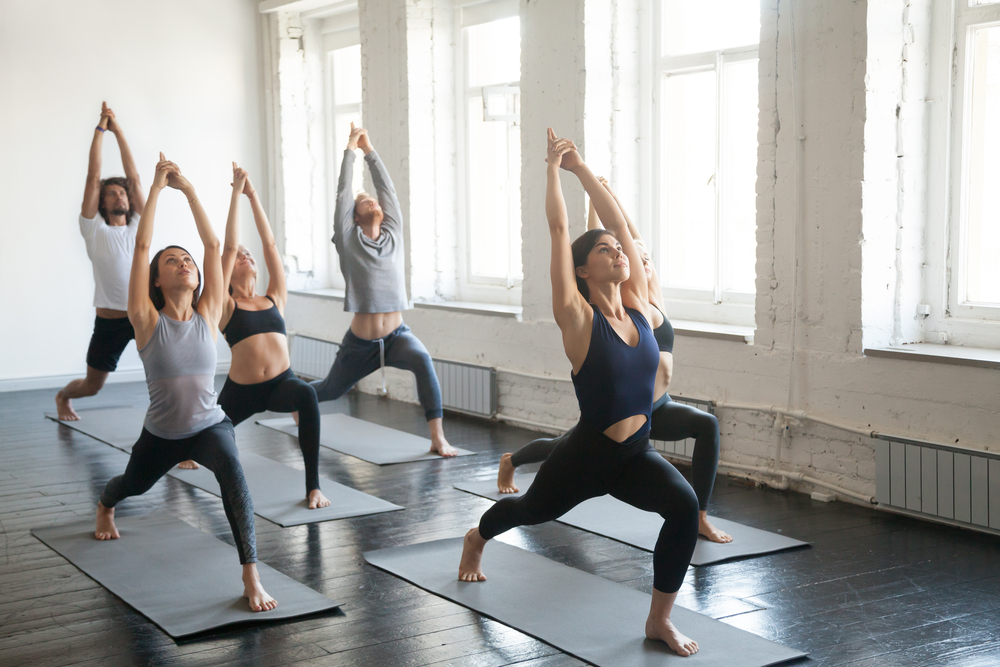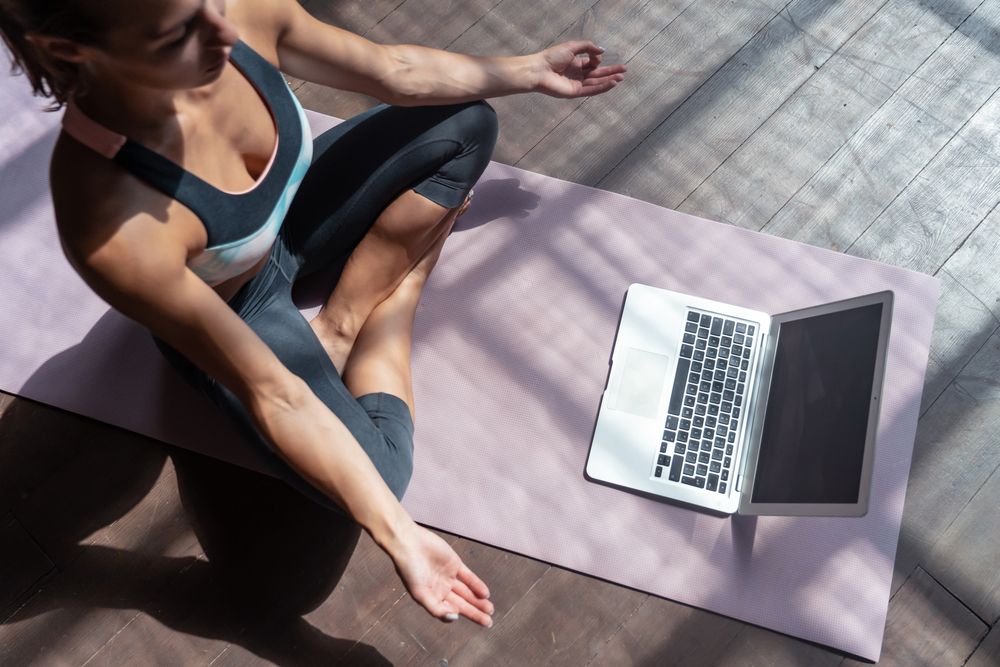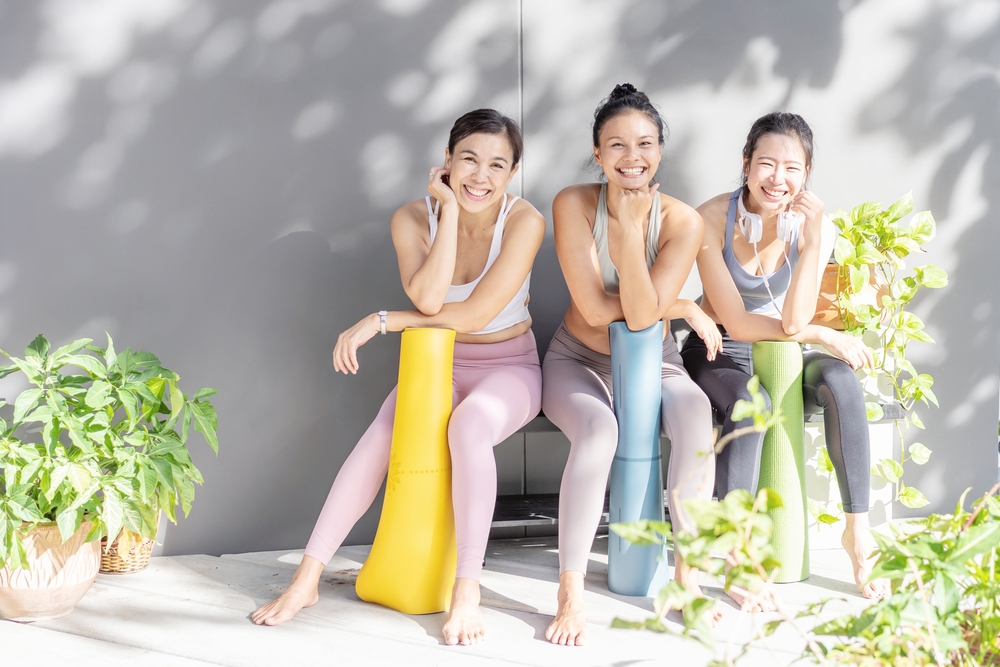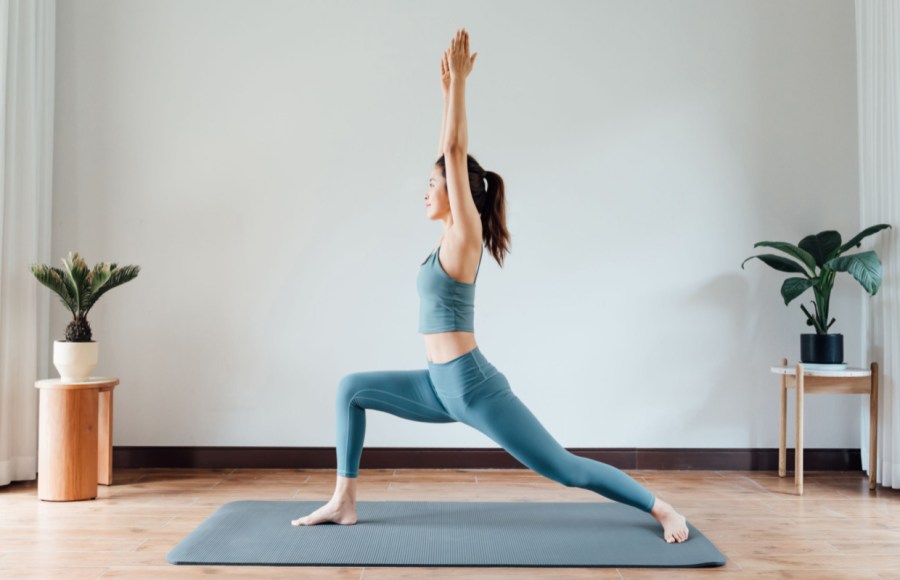Yoga connects your mind and body, giving you space to breathe and be calm while helping to re-shape your body. Here, we’re taking you through what yoga is, how it emerged and what benefits it offers, along with some basics for beginners…
Yoga has become increasingly popular in the West over the past few years, with classes suitable for beginners and practiced yogis alike popping up at several popular gyms – but what exactly is yoga, and where did it all begin?
What is yoga?
Yoga is a branch of Indian philosophy that emphasises the connection between mind and body. Although the word ‘yoga’ has many meanings, one of its most useful for us in the West is to ‘yoke’ or ‘unite’. This refers to the union of ourselves with the universe. That sounds lofty but, at its most basic level, yoga helps our bodies and minds connect through movement, mindfulness and breath. Over time, it leads to more self control and better body conditioning.
Get started on your yoga journey with the latest yoga kit
Try the Sundried Non-Slip Jute Yoga Mat
BUY IT NOW:
£18.90 / amazon.co.uk
In today’s world, that requires us to be ‘on’ 24/7, yoga can provide us with space to breathe (literally), move and reconnect with ourselves. Plus, as a happy by-product, it really works to reshape your body. If you’re looking for a long-term transformation in both your body and the way you see yourself, you’ve come to the right place.
The origin of yoga
Around 2,500 years ago in India, an author and sage named Patañjali wrote the first real yoga how-to – a book called the Yoga Sutras. This was a practical guide to the practice of yoga. Patañjali defined yoga with the Sanskrit phrase ‘citti-vrtti-nirohdah’ which translates as ‘the cessation of the turnings of the mind’.
Even today, the basic definition of what yoga is has changed little. It’s ultimately about stilling the chatter in our minds through focus. Whether that’s on our alignment and breath in postures, on a mantra, on the breath or an object in a breathing exercise, or meditation.
Related content:
- Best yoga clothes in the UK: what kit do I need?
- Yoga for anxiety: top tips to find your inner calm
- Power yoga workout: stretch, strengthen & burn calories [VIDEO]

What does yoga do: health and wellness benefits
As more research uncovers the practical benefits of meditation – from alleviating stress and depression to increased immunity and anti-ageing – mental health experts, teachers and even the NHS, are finding that the pay-offs of being ‘in the moment’ are available to ordinary people with far less time investment and no religious conversion. Here are the latest in ‘non-mystical’ meditation options.
Mindfulness: Its only goal is to notice the present moment. The ideal is 20 minutes a day. But, if you can’t manage that, just two or three minutes is a big help. The result is that, over time, you’ll be happier, calmer and more relaxed. Mindfulness is now being applied to sitting, eating, walking and even working. Try the app Mindfulness Meditation with Dr Mark Williams, from the App store.
Flow: Psychologists are discovering they can help people who can’t meditate traditionally find calm. If you completely focus on doing something you deeply enjoy, such as gardening, pottery, writing or cooking, it will create ‘flow’. You forget about time and place and become so engrossed in what you’re doing it becomes a natural form of meditation.
Movement: Whether it’s through yoga ‘asanas’ or sports, such as running, swimming or cycling, moving is a part of meditative traditions. The key is the same as with other meditation – breathe evenly, focus on your body, open your senses to your surroundings, and practise regularly.
Five principles of yoga for beginners
Among the most important aims of yoga is to put your body – with all its cravings, passions and urges – under the control of your mind. Patañjali defined what yoga is through methods such as controlling your breath and holding your body in steady poses. These techniques are known as hatha yoga. With a large catalogue of over 200 postures that has existed for thousands of years, hatha yoga has evolved substantially into many different hybrids. But its basic principles remain the same.
To understand these principles, think of a car. It needs certain things to function properly: a lubricating system, a battery, a cooling system, fuel and an intelligent driver. Your body has similar needs. Hatha yoga uses all these elements to create a total conditioning system for your body so it runs at its best. Here’s a simple look at the five essential principles of hatha yoga for beginners…

EXERCISE
In yoga, this takes the form of ‘asanas’ or postures, which lubricate, strengthen, stretch and tone your body. Though they can be incredibly challenging, yoga asanas are unlike the tiring movements found in other exercise forms. This is because they incorporate both challenge and recovery.
As you work through different yoga flows and practices, you’ll find there are moments when your body is positively shaking with effort. But the same circuit will always involve building up your body to be strong for the more challenging postures, then gently cooling it down in recovery moves.
Rather than only focusing on dramatically expending energy, like so many of today’s exercise forms do, yoga also emphasises the conservation of your body’s energy. This means that after each session – however tough – you have more energy than when you began and feel invigorated.
DIET
The diet recommended in yoga philosophy consists of simple, natural foods that are easily digested and promote good physical and mental health. Ideally vegetarian, it includes fruit, vegetables, grains, leaves, dairy produce, nuts and seeds. It also involved eating mindfully until you are only 80 per cent full. This is the ‘fuel’ aspect of the car!
BREATHING
The breath links your body to its battery, the solar plexus, located deep in your navel, where potential energy is stored and created. The breath is important in yoga to release this energy for mental and physical transformation.
Correct breathing makes yoga practice deeper yet easier. It also has a direct influence on your nervous system. In yoga, a range of breathing techniques, known as pranayama, are designed to achieve different effects, such as aiding digestion or calming.
RELAXATION
Relaxation is the body’s cooling system. When your body and mind are overworked, their efficiency decreases. This can leave you susceptible to mood changes and food cravings as the body uses its most primitive instincts to replenish its energy stores. The yoga tradition recognises that proper and regular relaxation releases tension and allows you to make new energy, even when you’re tired and overworked.
Relaxation is essential to any yoga practice, from beginners to pros. Although it’s possible to get a sense of relaxation in many yoga postures, such as Child’s pose or the Plough, the most powerfully rejuvenating posture for relaxing the body is savasana or Corpse pose.
You lie flat, face up, with your eyes closed at the end of each practice. According to most yoga teachers, it’s among the most important of all postures. This is because it’s the time when your body assimilates the accumulated benefits of the preceeding practice. Don’t be tempted to skip it. If you’re busy, miss out a posture!
MEDITATION
Positive thinking, loving kindness towards other people and meditation enable you to become a good ‘driver’ of the car that is your body! Positive thinking purifies your thoughts and fortifies you against negative ‘vampires’ that suck your energy and affect your equilibrium. Meditation – even just a few minutes a day – is an essential part of yoga for beginners. It helps to control and focus your mind away from impulsiveness.
But meditation doesn’t have to mean sitting in lotus for hours having wild visualisations. Mindfulness meditation*, which is becoming popular to help treat chronic pain, depression and even obesity, simply requires observing your thoughts as though they are clouds in the sky, always shifting and changing, unable to harm you.
Your meditation can take place at the end of your yoga practice or for 10 minutes in the morning. You can even do it for a minute on the bus or train or between meetings! Don’t pressure yourself to meditate for a set number of minutes at a set time – if you’re busy, a little regular meditation done often is better than a lot, done sporadically.

How modern yoga emerged
In the 20th century, teachers from India developed different systems in the hatha tradition. For example, in Pune, B.K.S. Iyengar created the structured Iyengar form. In Mysore, Sri K. Pattabhi Jois created the dynamic ashtanga style. In the second half of the century, thanks to Western enthusiasts going to India to learn from the masters, yoga began to flourish in the West. Then, once Madonna and Gwyneth Paltrow got into yoga, it took off like wildfire!
Now, there are about as many yoga types as there are practitioners, with hybrids such as dog yoga, acrobatic yoga and disco yoga cropping up. But certain elements will always be present. These are focus, centering and a returning to our inner selves and a more peaceful state. They’re as relevant now as they ever were.
Yoga and the mind-body connection
While the human mind tends to drift off into thoughts of the past or future, the human body exists only in the present moment. There are many different ways to practise yoga for beginners. But, hatha yoga in particular emphasises strenuous and persistent effort, encouraging awareness and deep conditioning of your body. As a result, it becomes healthier on the inside and looks better on the outside.
Coming back to our bodies through yoga postures that challenge and strengthen us brings our minds back to the present moment. And for that moment, worries drop away. We’re fully present and connected to our bodies.
The more you practise yoga for beginners, the stronger your body will become. You’ll also feel more connected to your body. The more connected to your body you feel, the less you want to feed it unhealthy food or to go for long periods without moving.
As most yoga practitioners prove, with their long limbs and radiant faces, a better body and clearer skin are inevitable by-products of this increased mind/body connection!








